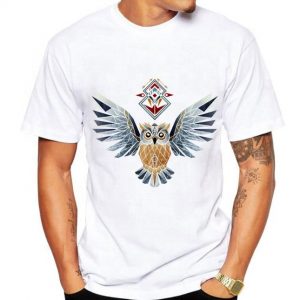Nowadays, the public’s aesthetics are becoming more and more diversified. The finished clothing on the market can no longer satisfy many people’s pursuit of individuality. Customized T-shirt clothing gradually enters the public’s field of vision and is deeply loved by young people.
Choosing the right printing process when customizing T-shirts can make the clothes icing on the cake. Most people have limited understanding of customization, and don’t know how to choose many customization processes. The following editor will take you to briefly understand the common printing processes and the precautions for custom T-shirts.
The mainstream printing processes include screen printing, digital direct injection, and embroidery. These three are the most widely used on the market. In addition, there are heat transfer, glue printing, 3D thick plate, luminous printing, reflective printing, and imitation bronzing printing. And so on, can basically meet the customization needs of most customers.
1. Screen printing
Screen printing refers to the use of silk screen as a plate base, and through a photosensitive plate making method, made into a screen printing plate with pictures and texts. In my country, screen printing has a history of more than 2,000 years of development. As early as the Qin and Han dynasties in ancient China, the clip-on printing method appeared. Its advantage lies in strong adhesion, clear patterns, soft layout, small printing pressure, large printing area, which is chosen by more consumers, and preferential prices. It is the preferred process for most groups to customize T-shirt apparel.
2. Digital direct injection
With the continuous development of computer technology, digital printing came into being. It can be edited and processed through the computer, which greatly shortens the production time. Under normal circumstances, the customer selects the pattern and fabric, and the finished product can be obtained in 1 to 2 hours. More environmentally friendly. Digital direct-injection is rich in colors, using four colors plus spot colors, and can print 16.7 million colors, which can meet people’s individual needs to the greatest extent. And the printing color is rich, there are dark and light colors to choose from. For white clothes, light color direct injection is preferred. The printing color is not limited, and there is no obvious glue texture; if it is to print a richer color pattern, dark direct injection is the first choice. After printing, the color reproduction is high, and there will be no large base color.
3. Embroidery
Machine-embroidered products have the characteristics of strong practicability, variety of patterns, changeable stitches, novel patterns, and rich colors. The production speed of the automatic embroidery machine is faster. For example, the Tajima embroidery machine of Japan can store 30 different patterns and can zoom in, zoom out or change the direction. One hundred thousand stitches of three-dimensional embroidery, six processes, fine and soft stitches, weave patterns. Three-dimensional and shiny, it can also be supplemented by printing technology to make customized patterns more abundant. Large-scale embroidery is not recommended for summer clothing, which will reduce the wearing experience.
4. Heat transfer
The advantages of heat transfer business are good adhesion of the pigments after printing, clear pictures and texts, and accurate color registration. The pattern surface is smooth, does not fade, the writing lines are clear, and the offset heat transfer pattern is realistic and even up to the photo effect. The pattern is washable, does not crack, and has high fastness, but it is poorly breathable and has a feeling of plastic covering. It is suitable for making patterns with full layers and delicate tones. Among them, the sublimation heat transfer is only suitable for light-colored and white polyester fabrics, with a large pattern area and bright colors.
5. Glue printing
The characteristic of glue printing is to adapt to printing of various color depths and materials. It can be printed on blended fabrics of cotton, linen, viscose, polyester, nylon, polypropylene, polychloride and various fibers, as well as leather and artificial leather. For printing on other materials, it can be used for fluorescent printing, inkjet printing, burnout printing, electrostatic flocking printing and other printing processes.
The biggest advantage of the glue printing process is that it is washable and not easily deformed. It has a wide range of applications, beautiful colors and high reduction. It is the first choice for large-area and multiple colors. But its printing process is more complicated than the water-based printing process. Relatively high.
After reading the above common printing processes, if you want to customize a T-shirt, which one would you choose?
























